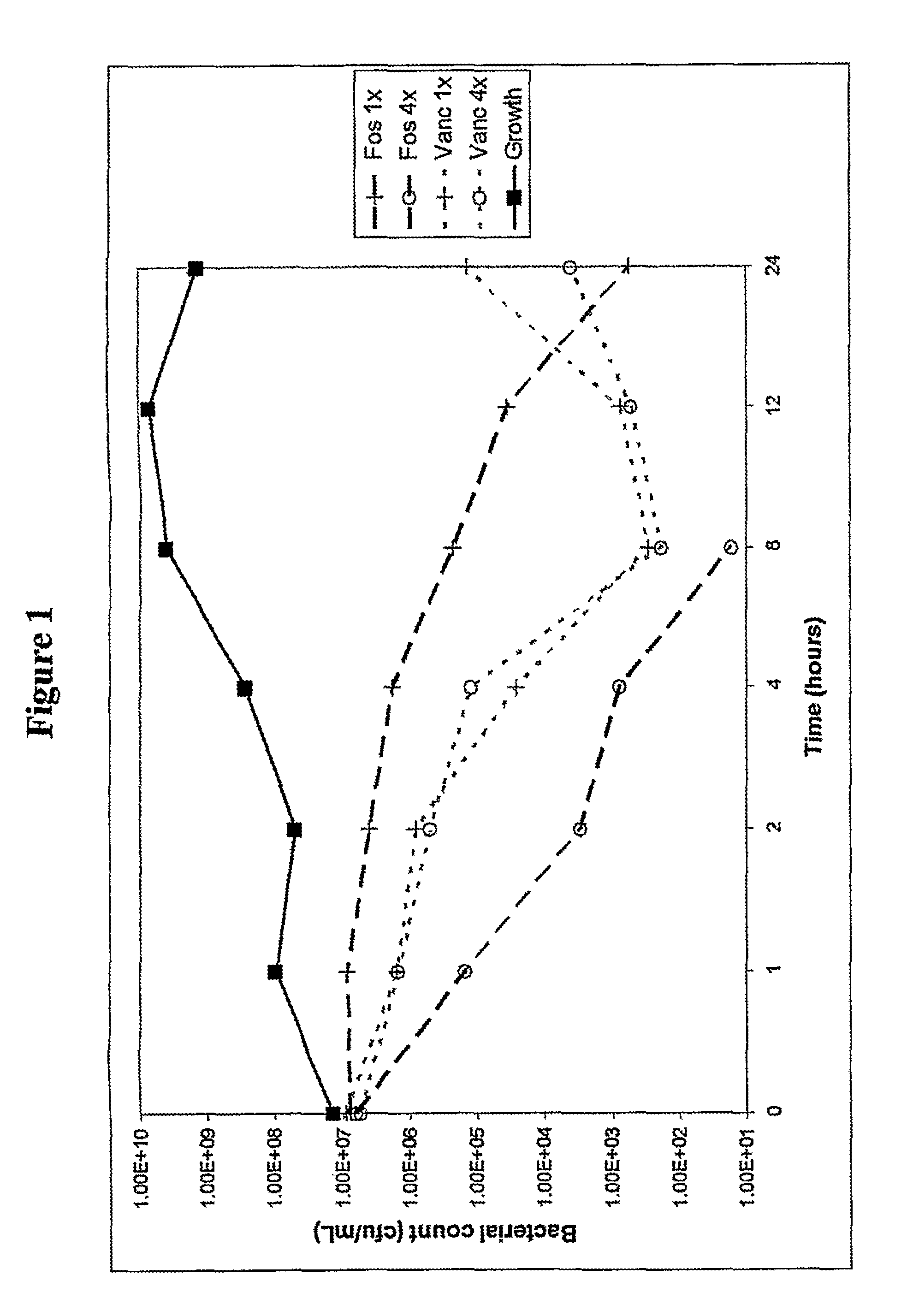Antibacterial combination therapy for the treatment of gram positive bacterial infections
a combination therapy and gram-positive bacteria technology, applied in the direction of antibacterial agents, drug compositions, peptide/protein ingredients, etc., can solve the problems of increasing morbidity and mortality, complicated treatment, and limited therapeutic options for the treatment of such drug-resistant microorganisms, especially gram-positive bacteria, so as to reduce the likelihood of visa development, eliminate and/or reduce the contamination by mrsa, the effect of preventing the development of an infection
- Summary
- Abstract
- Description
- Claims
- Application Information
AI Technical Summary
Benefits of technology
Problems solved by technology
Method used
Image
Examples
Embodiment Construction
Methods:
[0100]In example experiments miconazole nitrate, econazole nitrate and clotrimazole were dissolved in DMSO. Colistin, D-cycloserine, fosfomycin and polymixin B were dissolved in water. Nisin was suspended at 10 mg / mL in 0.02 M HCl, and the supernatant fraction following centrifugation at 10,000 g for 10 mins was used in the following experiments.
[0101]Other solvents that may be used include caster oil, pyridine, and 0.9% saline. For IV administration agents may be solubilised in polyethoxylated caster oil, or cyclodextrins such as sulfobutylether7-βcyclodextrin or hydroxypropyl-β-cyclodextrin and lactic acid. Minimum inhibitory concentrations (MICs) of a range of clinical and control bacterial organisms were measured according to BSAC (British Society for Antimicrobial Chemotherapy) guidelines (Andrews 2001), for single agents. The method of determining MICs of imidazole with colistin, D-cycloserine, fosfomycin, polymixin B, or nisin is described briefly as follows. MICs wer...
PUM
| Property | Measurement | Unit |
|---|---|---|
| concentration | aaaaa | aaaaa |
| concentration | aaaaa | aaaaa |
| concentrations | aaaaa | aaaaa |
Abstract
Description
Claims
Application Information
 Login to View More
Login to View More - R&D
- Intellectual Property
- Life Sciences
- Materials
- Tech Scout
- Unparalleled Data Quality
- Higher Quality Content
- 60% Fewer Hallucinations
Browse by: Latest US Patents, China's latest patents, Technical Efficacy Thesaurus, Application Domain, Technology Topic, Popular Technical Reports.
© 2025 PatSnap. All rights reserved.Legal|Privacy policy|Modern Slavery Act Transparency Statement|Sitemap|About US| Contact US: help@patsnap.com



